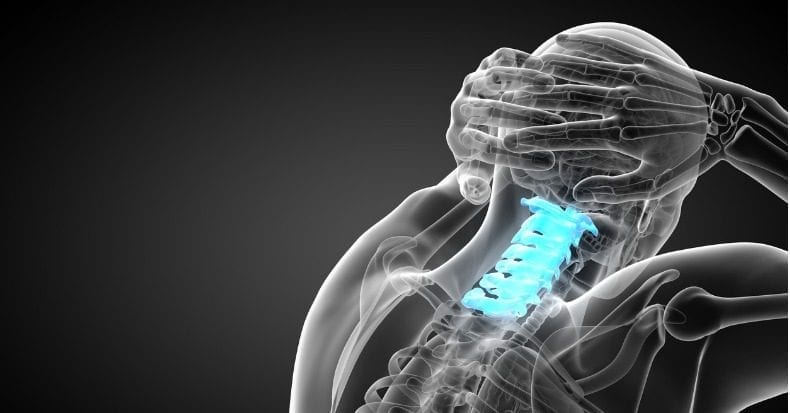
showed that ICU admission, mechanical ventilation, the necessity for MRI CS, and the time to CS clearance were clinically significant predictors of collar-related decubitus ulceration, with time to CS clearance being the strongest indicator.
CERVICAL SPINE SKIN
Small series show that skin breakdown is associated with days in cervical collar. Early removal of cervical collars may be associated with decreased collar-related decubitus ulceration, decreased intracranial pressure (ICP), fewer ventilator days, fewer intensive care unit (ICU) and hospital days, and a decrease in the incidence of delirium and pneumonia. Scientific Foundation Removal of Cervical CollarsĬervical collars should be removed as soon as feasible after trauma.
:max_bytes(150000):strip_icc()/GettyImages-1206603484-9bdac821dbfb4c82b158e05ca1e19750.jpg)
If MRI disclosed nothing abnormal, the cervical collar may be safely removed (level 2). Remove the cervical collar on the basis of CT alone.ģ. Continue cervical collar immobilization until a clinical examination can be performed.ī. The risk/benefit ratio of obtaining MRI in addition to CT is not clear, and its use must be individualized in each F/E radiography should not be performed (level 2).Ģ. For the obtunded patient with a negative CT and gross motor function of all four extremities:ġ. Cervical collar may be removed after negative and adequate F/E films (level 3). Cervical collar may be removed after negative MRI (level 3).Ĭ. For the neurologically intact awake and alert patient complaining of neck pain with a negative CT:ī. If there is neurologic deficit attributable to a CS injury: Plain radiographs contribute no additional information and should not be obtained (level 2). The primary screening modality is axial CT from the occiput to T1 with sagittal and coronal reconstructions (level 2). This applies to patients with pain or tenderness, patients with neurologic deficit, patients with altered mental status, and patients with distracting injury. All other patients in whom CS injury is suspected must have radiographic evaluation. CS imaging is not necessary and the cervical collar may be removed (level 2).ĭ.

CERVICAL SPINE FULL
In awake, alert patients with trauma without neurologic deficit or distracting injury who have no neck pain or tenderness with full range of motion of the CS: Immobilization in a cervical collar is not necessary unless the trajectory suggests direct injury to the CS (level 3).Ĭ. In the patient with penetrating trauma to the brain: Cervical collars should be removed as soon as feasible after trauma (level 3).ī. This type of recommendation is useful for educational purposes and in guiding future clinical research.

This recommendation is generally supported by class III data. Level 3: The recommendation is supported by available data but adequate scientific evidence is lacking. This recommendation is usually supported by class II data or a preponderance of class III evidence. Level 2: The recommendation is reasonably justifiable by available scientific evidence and strongly supported by expert opinion. Conversely, low quality or contradictory class I data may not be able to support a level 1 recommendation. This recommendation is usually based on class I data, however, strong class II evidence may form the basis for a level 1 recommendation, especially if the issue does not lend itself to testing in a randomized format. Level 1: The recommendation is convincingly justifiable based on the available scientific information alone. Recommendations were classified as level 1, 2, or 3 according to the following definitions: Quality of the ReferencesĪrticles were classified as Class I, II, or III as described in the EAST primer on evidence based medicine as follows: Ĭlass I: Prospective, randomized clinical trials (no references).Ĭlass II: Clinical studies in which data were collected prospectively or retrospective analyses based on clearly reliable data (20 references).Ĭlass III: Studies based on retrospectively collected data (32 references). Of these, 52 were felt to be useful for construction of these guidelines, and an evidentiary table was constructed (Table 1). These articles were then reviewed for relevance by the committee chair, and the final reference list of 78 citations was distributed to the remainder of the study group for review. MD Process Identification of ReferencesĪ search of the National Library of Medicine and the National Institutes of Health MEDLINE database was performed using (The search retrieved English language articles regarding the identification of CS injury from 1998 to 2007 review articles, letters to the editor, editorials, other items of general commentary, and case reports were excluded from the search.



 0 kommentar(er)
0 kommentar(er)
